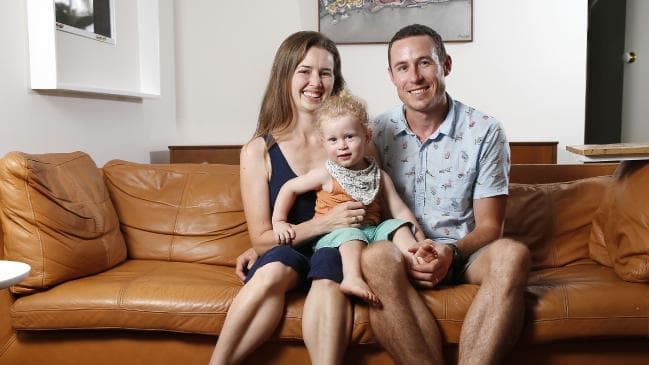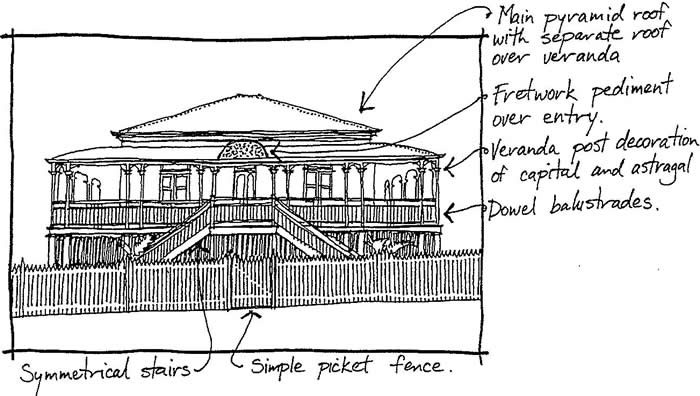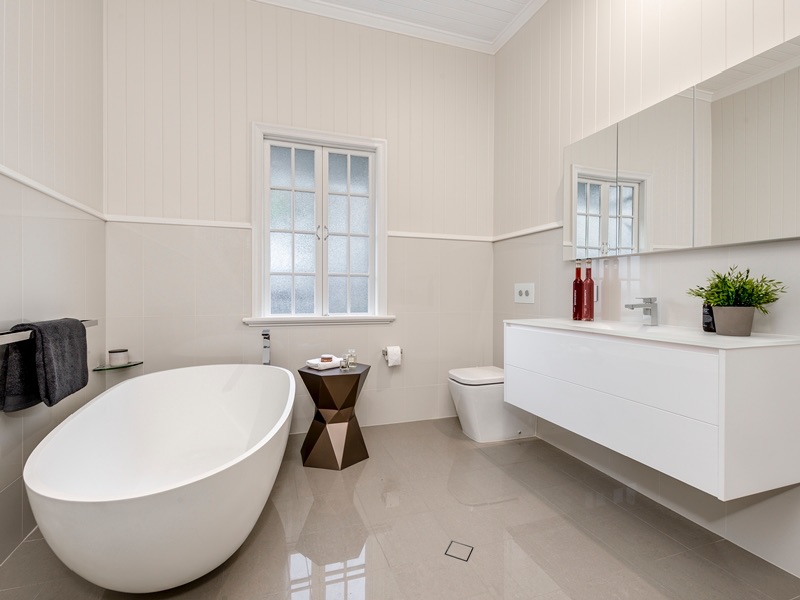1 in 5 first-time landlords are ‘accidental investors’
ONE in five first-time landlords may have fallen into the property investment game by accident, according to a new survey. Are you one of them?
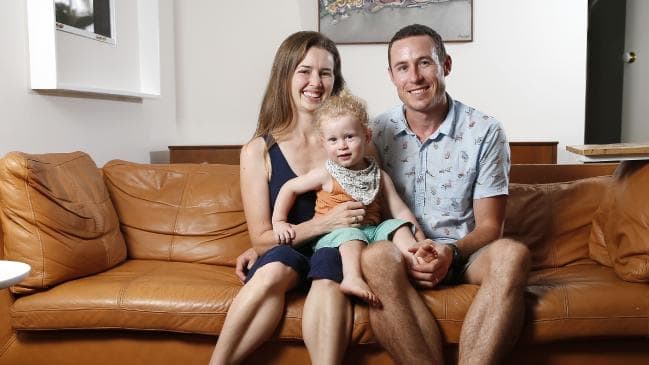
Prudence and Callum Klaer with son, Frederick, at their home in Moorooka. They’ve become ‘accidental property investors’. Image: AAP/Josh Woning.Source:News Limited
ONE in five first-time landlords may have fallen into the property investment game by accident.
New data from a leading quantity surveyor has revealed more than 20 per cent of landlord clients have become property investors unintentionally — joining the nation’s 2.2 million of them.
MCG Quantity Surveyors managing director Mike Mortlock said he had discovered a large number of his clients had become property investors simply because they had chosen not to sell their home when it was time to move on.
“Many of these owners seem to have fallen into their first investment, rather than
made a strategic decision to become a landlord,” Mr Mortlock said.
“It’s a fairly stunning result given the broad perception of property investors as a
calculated, high-earning cohort set to tactically snap up all the available real estate.”
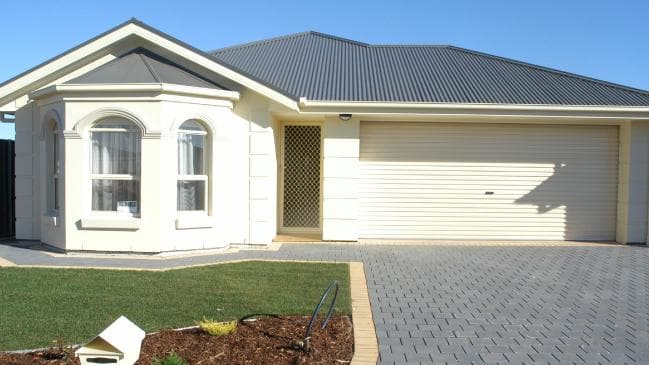
One in five first-time landlords may have fallen into the property investment game by accident, new data shows.Source:Supplied
While preparing tax depreciation schedules, MCG asked his clients whether they had
previously occupied the property, and found 23 per cent had lived in their investment
property as their principal place of residence (PPR), with owners living in their former home
for four years and 11 months on average.
Mr Mortlock said the time frame showed only a fraction of those investors were
strategic first homeowners who took advantage of stamp duty concessions or grants
by living in their properties for the minimum required period prior to moving out.
“Such a group always planned on being investors, but they would be a very small
percentage of those in our research, otherwise the average resided-in period would
much be lower than five years,” he said.
“We think it came down to people looking to upsize and realising they were in a position where they could hold on to their old property and upgrade as well.”
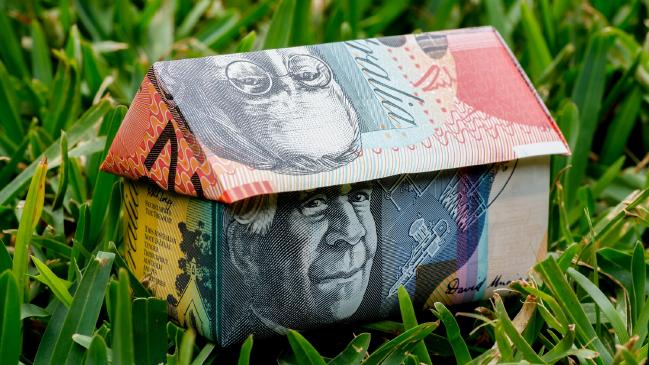
MCG Quantity Surveyors MD Mike Mortlock survyed his clients and found 23% had lived in their investment property as their PPR.Source:Supplied
Brisbane couple Callum and Prudence Klaer found themselves owning an investment property without even planning to.
They bought their unit in Woolloongabba in 2010 as first homeowners with the intention of living there long term.
Mr Klaer lived there for 12 months with friends before he and Pru headed north for work opportunities and friends of theirs lived there while they were away.
In 2014, they returned and planned to settle down in the unit, until 2016 when Pru fell pregnant.
The couple then decided they wanted a back yard and put the unit on the market, only to find they couldn’t sell it after the normal marketing campaign.
They decided to keep the unit after chatting with a bank and realising they qualified for an Interest Only loan.
“We tried to sell, but the bank had valued it at $340,000 and we had it on the market at that price for about a year, but we had no offers, despite the mean price in the area being $450,000,” Ms Klaer said.
“So, rather than lose money, we thought, we’d just wait for the market to improve, or keep it.”
So, now they find themselves living in a PPR in Moorooka with an investment property in Woolloongabba, which they rent out for about $360 a week.
“We have no trouble renting it out,” Ms Klaer said.
“I like the idea of keeping it because it’s so close to the city and it would be good for our son when he grows up.”

It could be helpful to get a depreciation schedule at the point the PPR becomes an investment property.Source:istock
Mr Mortlock said he believed in holding on to property until retirement age if you could comfortably service the mortgage.
“If you can convert your PPR into an investment, the more hotels you own on the Monopoly board, the better you are at the end of the game,” he said.
The rise of the accidental investor could also have broader political implications, according to Mr Mortlock.
“Most of these landlords own just one property and are mum-and-dad style investors
looking to get a financial step up before retirement,” he said.
“It’s this group who will be most impacted by any future changes to negative gearing
and capital gains tax, or upward movements in interest rates.
“In our experience, those with the largest property portfolios are the least likely to
care about negative gearing or tax changes because they tend to be positively
geared.”
According to the ATO, fewer than 20,000 Australians have an interest in six or more
investment properties.
TOP FIVE TIPS FOR ACCIDENTAL PROPERTY INVESTORS
1. Get a bank valuation
If you are converting a PPR to an investment property, you should get a valuation done at the time the property becomes an investment to minimise capital gains, Mr Mortlock said.
2. Get a depreciation schedule at the point the PPR becomes an investment property
“With changes to depreciation legislation, you won’t be able to claim plant and equipment items unless you purchased prior to the 9th of May, 2017, and rented it before the end of that financial year,” Mr Mortlock said.
“But what hasn’t changed is building structure deductions.”
3. Don’t keep your PPR as an investment property just for the sake of it
“If you own a PPR in a market that has a high vacancy rate and minimal prospects for capital growth, it might not be the best decision to keep it,” Mr Mortlock said.
“It might be worth selling it and buying in an area with better long-term growth potential.”
4. Recruit a team of advisors to help
“We too often see property investing as a bit of an afterthought,” Mr Mortlock said.
“I like to say to people, you can eat your lollies but you’ve got to have your veges first.
“Plan your exit strategy and what you’re trying to get to over whatever time frame.”
5. Be patient!
“Have a long-term plan,” Mr Mortlock said.
“Don’t worry about year-on-year changes.
“Buy a property for the long-term and don’t make kneejerk decisions — it’s expensive to get in and out of investment properties.”
Source: news.com.au

